Fondly called the Pink City, Jaipur, the capital city of Rajasthan, is one of the most popular places to visit in India, and among the must-include places in Rajasthan tour packages. Attracting visitors from around the globe, Jaipur is renowned for its stunning palaces, impressive forts, traditional havelis, remarkable temples, and vibrant markets. Additionally, the city is a treasure trove of history and heritage, and the forts in Jaipur reflect the exquisite architecture along with the glorious past of various Rajput rulers. For those looking to immerse themselves in the splendor of Jaipur within a short period, we have crafted a concise Jaipur 2-day trip itinerary that emphasizes the key attractions of this enchanting city.
Amer Fort / Amber Fort
Perched atop the Aravali Hills, Amer Fort, also known as Amber Fort, is recognized as one of the most well-preserved forts in Rajasthan and among the top places to visit in Jaipur. Constructed in 1592 AD by Maharaja Man Singh of the Kachwaha Rajput dynasty, the fort was built upon the foundations of an earlier edifice and subsequently expanded by his successors. It has been designated as a UNESCO World Heritage Site, forming an integral part of the Hill Forts of Rajasthan group. Overlooking the serene Maota Lake, the fort is constructed from red sandstone and showcases a blend of Hindu and Muslim architectural influences. Jaleb Chowk, Diwan-e-Khas, Diwan-i-Aam, Mughal Gardens, Sukh Niwas, and Sheesh Mahal are prominent places to visit inside the fort as part of the Jaipur tour packages. Additionally, the fort’s walls are adorned with intricate paintings and carvings, embellished with precious stones.
Book Here : Golden Trianle Tour Packages
Srijagat Siromaniji Temple
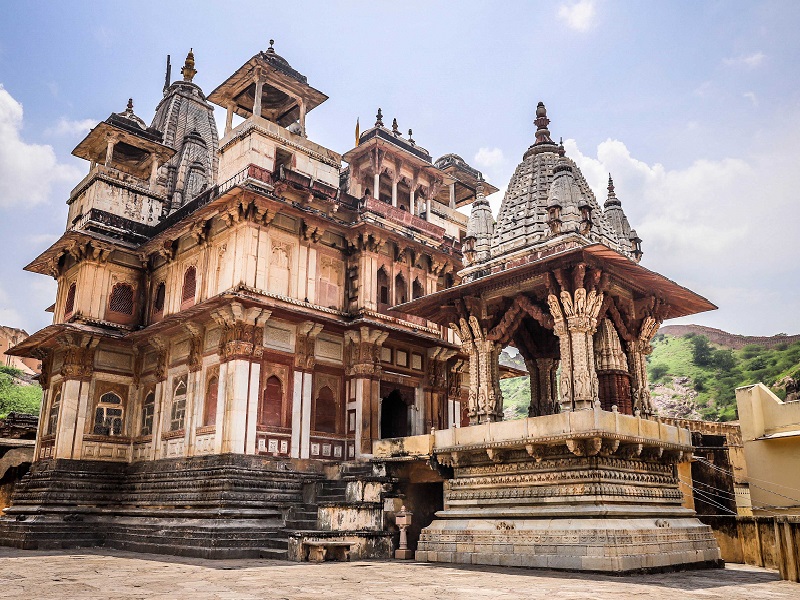
Srijagat Shiromani Temple is an ancient temple situated at the backward premises of Amer Fort in Jaipur, among the most beautiful places to visit near Delhi. This temple, dedicated to Lord Krishna and his devoted follower Meera Bai, was constructed between 1599 and 1608 AD by Queen Kanakwati, the spouse of King Man Singh I, in memory of her son, Jagat Singh. It is said that the statue of Lord Krishna housed within this temple is the very same one that Meera Bai used to worship in Mewar. Reflecting the Nagara architectural style, the Srijagat Shiromani Temple features a sanctum, vestibule, and mandapa. The entrance is adorned with a stunning marble archway, complemented by intricate carvings of elephants. This temple is an essential stop on any Jaipur tour from Delhi.
Book Here : Jaipur Honeymoon Packages
Jal Mahal
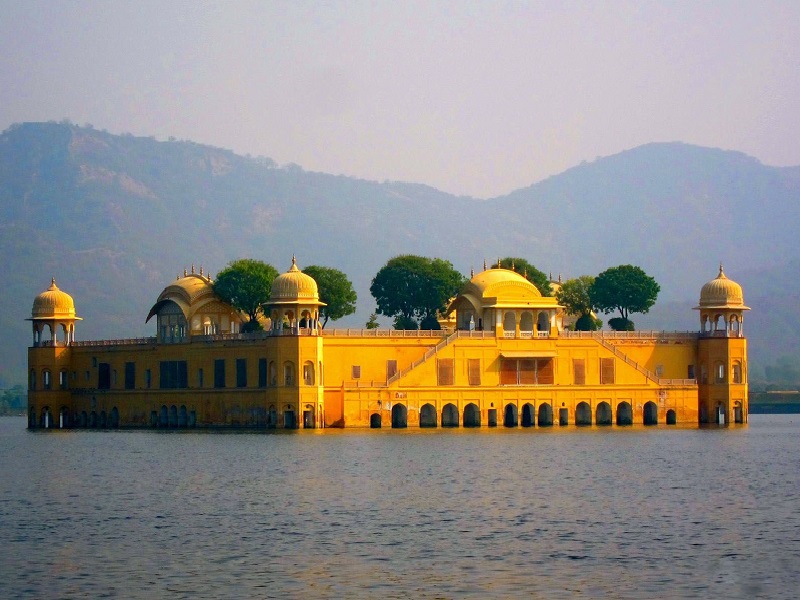
Standing tall in the middle of the serene Man Sagar Lake, Jal Mahal, also known as the Water Palace, was constructed in the 18th century by Sawai Madho Singh I as a summer retreat in Jaipur, one of the notable tourist places near Udaipur. The palace underwent renovations and expansions in the 18th century under the guidance of Madho Singh II. It is regarded as an architectural masterpiece, showcasing a blend of Rajput and Mughal architectural styles. Visitors can enjoy a stunning view of the lake from the Man Sagar Dam, framed by the picturesque Nahargarh hills. Constructed from red sandstone, the palace consists of five stories, four of which are submerged when the lake reaches full capacity, leaving only the top floor visible. The palace is particularly enchanting in the evenings when it is illuminated by floodlights. During the winter months, numerous migratory birds can be observed around Jal Mahal, adding to the allure of Jaipur heritage packages.
Book Here : Jaipur Family Packages
Garh Ganesh Temple
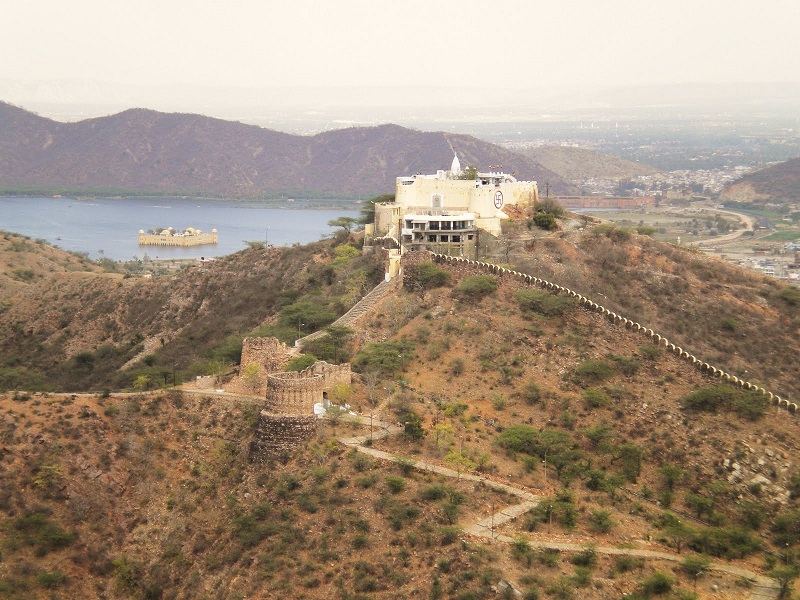
The Garh Ganesh Temple stands as one of the most ancient and renowned temples in Jaipur. This sacred site, dedicated to Lord Ganesh, was constructed by Maharaja Sawai Jai Singh I during the Ashwamedha Yagna, before the founding of Jaipur, making it one of the prominent places to visit near Agra. The Maharaja arranged for the statue to be positioned in such a manner that it could be viewed from the Chandra Mahal of the City Palace in Jaipur using binoculars. In this temple, Lord Ganesha is revered in the form of a child known as ‘Vigra Purusha Kriti,’ notably depicted without a trunk. Nestled amidst tranquil hills and lush greenery, visitors can access the temple by ascending a staircase of over 300 steps. Additionally, a five-day fair is held during Ganesh Chaturthi, drawing numerous devotees and tourists as part of the Jaipur pilgrimage packages.
Book Here : Jaipur Tour from Agra
City Palace / Sawai Man Singh II Museum
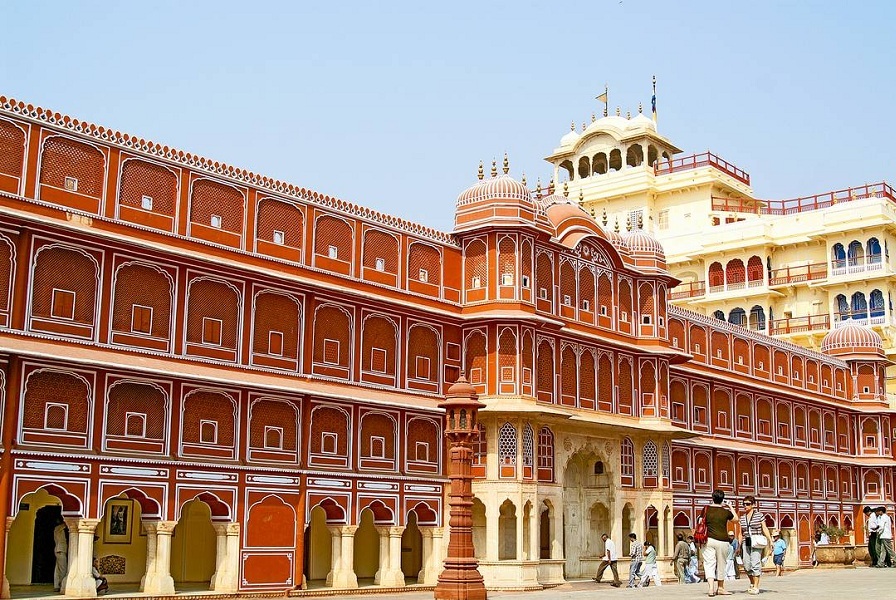
Constructed in 1732 by Maharaja Sawai Jai Singh II, the City Palace stands as one of India’s most esteemed palaces and is a prominent tourist attraction in Jaipur tour from Udaipur. This expansive palace showcases a blend of European, Rajput, and Mughal architectural styles, covering a significant portion of the walled city, specifically one-seventh of its area. The complex is adorned with various gardens, temples, and pavilions. Notable structures within the City Palace complex include Chandra Mahal, Maharani’s Palace, Mubarak Mahal, Shri Govind Dev Temple, Diwan-i-Aam, and Diwan-E-Khas. Currently, the majority of the palace serves as the residence for the descendants of Jaipur’s former rulers, making it one of the key heritage sites near Delhi. Visitors are permitted only on the ground floor, which houses the Maharaja Sawai Man Singh II Museum, featuring an array of carpets, manuscripts, and other artifacts belonging to the royal family.
Book Here : Jaipur Luxury Tour Packages
Birla Mandir
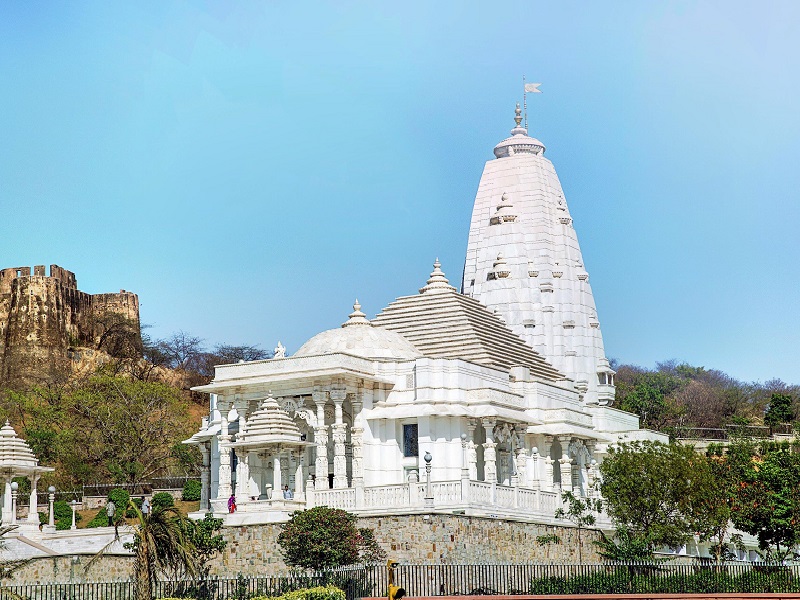
Birla Mandir, also known as the Laxmi Narayan Temple, is a prominent Hindu temple situated at the foot of Moti Dongri Hill in Jaipur, among the top places to visit in Rajasthan. Constructed in 1988 by the Birla family, this exquisite temple is a significant landmark in Jaipur. Crafted from white marble, Birla Temple is dedicated to Lord Vishnu (Narayan) and his consort, Lakshmi. The temple’s walls are adorned with intricate carvings of Hindu symbols and ancient verses from the Geeta. It presents a breathtaking sight when illuminated at night. In addition to the religious idols, visitors can also observe images and representations of various religious figures, philosophers, and historical luminaries, including Socrates, Buddha, Zarathustra, and Confucius, as part of the Jaipur leisure packages.
Book Here : Rajasthan Heritage Tours
Hawa Mahal
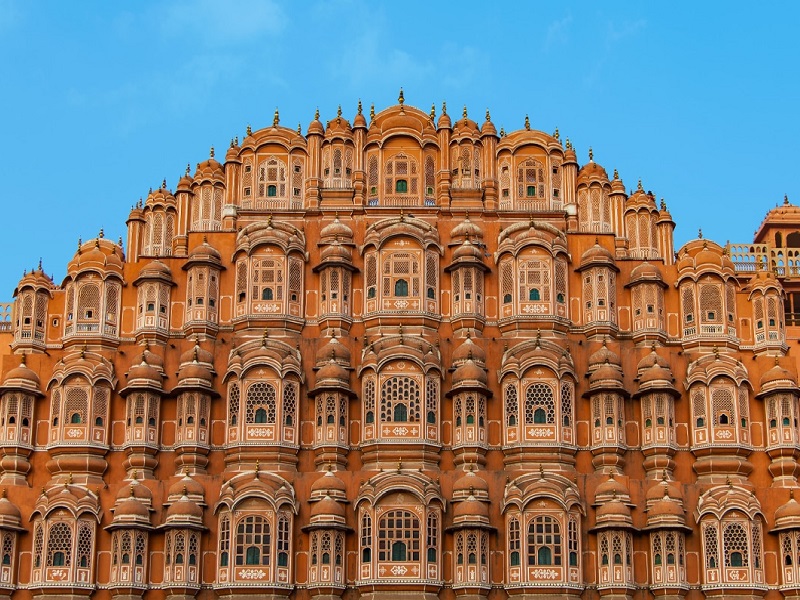
The illustrious Hawa Mahal, also known as the Palace of Winds, was erected in 1799 under the patronage of Maharaja Sawai Pratap Singh as an extension of the magnificent City Palace. This palace stands as a significant landmark in Jaipur and is an essential inclusion in Jaipur 3-day tour packages. The design of the palace is attributed to the architect Lal Chand Ustad, and it is said to be inspired by the crown of Lord Krishna. Constructed from exquisite red and pink sandstone, the structure resembles a five-storey pyramid. Its distinctive façade features 953 small windows, referred to as jharokhas, which are adorned with intricate latticework. This lattice was originally intended to enable royal women to observe the daily activities on the streets below without being seen. The interior of the palace exudes elegance, and access to the upper levels is provided by narrow ramps, as there are no stairs within the Hawa Mahal, Jaipur, among the premier heritage sites near Udaipur.
Book Here : Jaipur Couple Packages
Albert Hall Museum
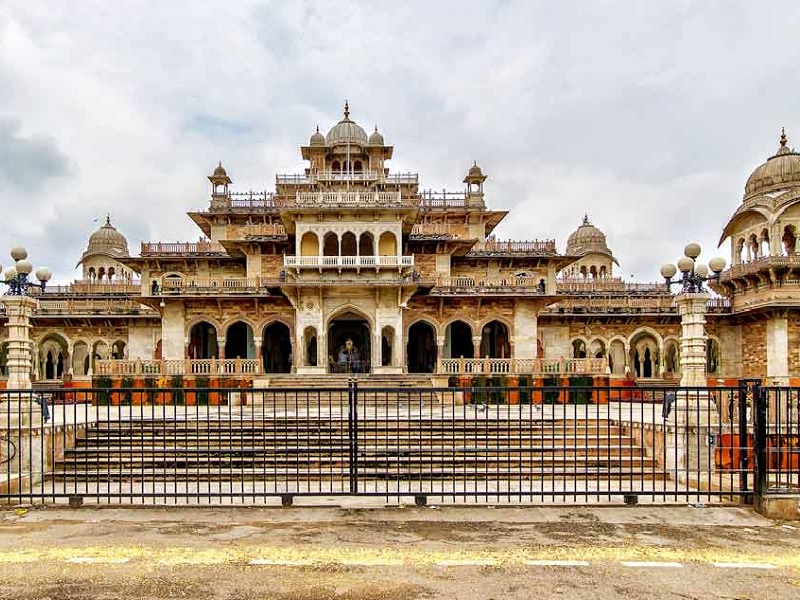
One of the oldest museums in Jaipur, Albert Hall Museum was built by Maharaja Sawai Ram Singh II and was designed by Sir Samuel Swinton Jacob. It was opened to public in 1887 and became one of the must-include places in Jaipur adventure packages. The museum showcases a unique blend of Indo-European architectural styles, featuring numerous archways, towers, and courtyards that exemplify exquisite design. The corridors are adorned with various murals, including depictions from the Ramayana, inspired by illustrations from the Persian Razmnama commissioned for Emperor Akbar. This museum is home to an impressive collection of 19,000 historical artifacts, encompassing a wide range of items such as metalwork, ivory crafts, lacquer items, jewelry, textiles, pottery, intricately carved wooden pieces, arms and weaponry, clay models, sculptures, and educational, scientific, and zoological specimens. Additionally, visitors can explore an assortment of rare artifacts, including textiles, carpets, the region’s flora and fauna, toys, dolls, and even an Egyptian mummy from the Ptolemaic period, all included in Jaipur packages. Notably, the museum also houses the renowned Persian Golden Carpet, acquired by Raja Jai Singh from the Persian monarch Shah Abbas.
Book Here : Jaipur Wildlife Packages
Jantar Mantar
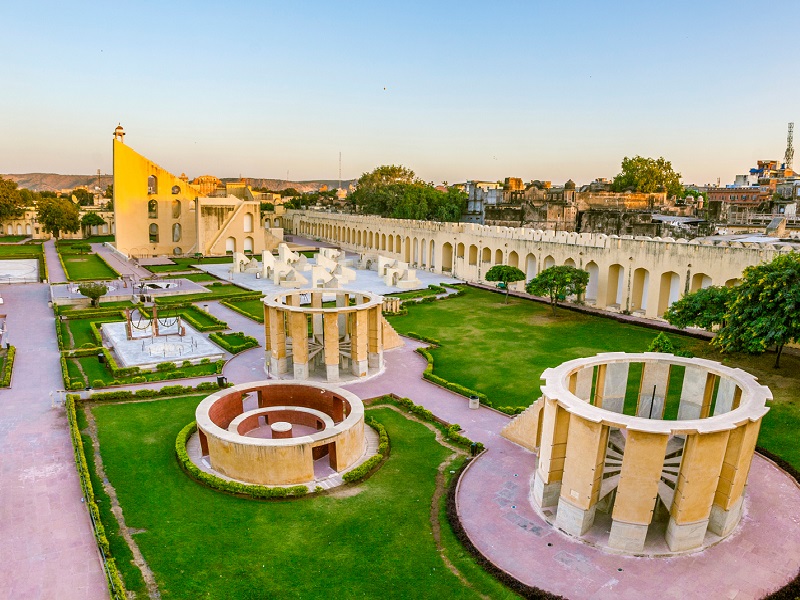
If astronomy fascinates you, Jantar Mantar must be on your bucket list of places to visit as part of your Jaipur tour in 2 days. It was built by the scholar Sawai Jai Singh in the 18th century, and is the largest of the five astronomical observatories present in India. The other four astronomical observatories are located at Delhi, Varanasi, Mathura and Ujjain. A UNESCO World Heritage Site, the monument features masonry, stone and brass instruments that were built using astronomy and instrument design principles of ancient Hindu Sanskrit texts. It features the world’s largest stone sundial Samrat Yantra along with 15 astronomical instruments that were used for varied purposes, including forecasting of sunrise and sunset times, discovering the location of major stars and eclipses.
Book Here : Rajasthan Honeymoon Packages
*Featured Source



